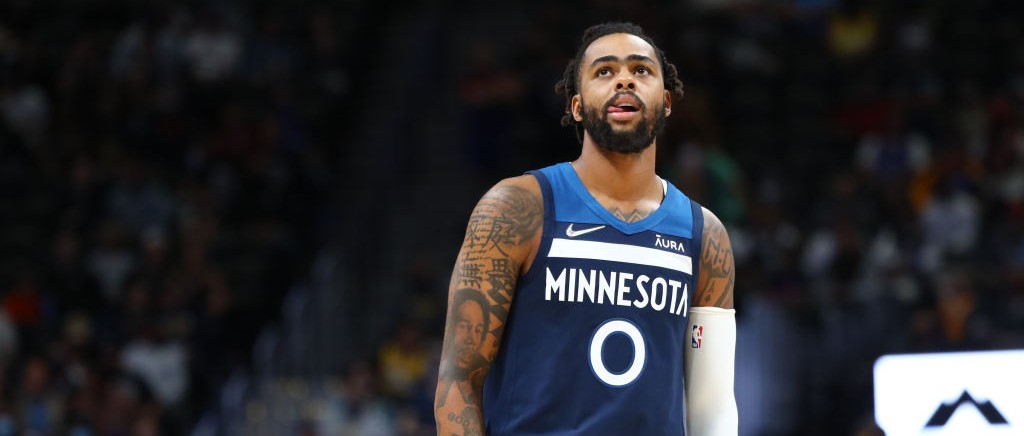When the Minnesota Timberwolves acquired D’Angelo Russell in February 2020, they did so under the belief he could be the perimeter complement to franchise cornerstone Karl-Anthony Towns. Russell is a good shooter and passer, and rostering someone who could conceivably ease the creation load for Towns made sense. Russell may not have been the most shrewd bet to fill that archetype, but it’s the direction Minnesota chose.
Since that trade, the Timberwolves have played 86 games. Towns and Russell have only suited up together for 25 of those contests. Further complicating matters is the selection of talented No. 1 pick Anthony Edwards, who, while years away from his prime, might actually project as the perimeter complement Minnesota idealized in Russell. Those three have only played 327 minutes together. Narrow the parameters down to minutes under head coach Chris Finch and that gets trimmed to 305.
Towns is a borderline superstar, one Minnesota should not and will not trade. Edwards enjoyed significant gains as his rookie season progressed and looks like he could be a devastating scorer relatively soon. He, too, is around for the long haul.
So, how does Russell slot in as the third member of this trio? Where does he discern his role after functioning as an on-ball creator for most of the last few years if the Timberwolves aim to continue refining Edwards’ handling chops? Edwards has reportedly appeared much improved defensively to open his sophomore year, but how tenable is a defense constructed around these three?
With improved health from Towns and Russell and another year of Edwards’ development, many of these variables can be addressed in 2021-22 — and the foundation was laid in some regards last season.
At least offensively, this group harmonizes pretty seamlessly. There were examples during the closing stretch of 2021 and in their 327 minutes together, Minnesota’s offensive rating was 120.9. The Russell-Towns pick-and-roll occupies defenses, while Edwards is an explosively canny cutter off the ball and budding spot-up threat. Yet there will also be times when Edwards commandeers possessions and slides Russell off the ball. Maintaining a quick trigger, zipping around off-ball screens and improving as an interior threat are the avenues to maximizing this role.
Both Edwards and Russell seemingly fit well alongside Towns. How those two pair together, though, is a bit murkier and probably forces Russell to make more concessions than Edwards. Whether it’s better applying his size at the point of attack to mitigate his lack of strength and lateral quickness or parlaying his playmaking intelligence into savvy off-ball reads, some sort of growth defensively feels imperative.
As they assimilate more on-court experience, the offense should progress. Edwards is a powerful slasher with a tenuous jumper. Russell is a versatile shooter and shaky driver. They can account for the other’s weaknesses offensively, while each fashions distinct, crafty two-man games with Towns.
Russell is important to this team’s success. How he stays healthy and navigates life around starkly different circumstances than the ones he first witnessed upon arrival in Minnesota will help determine what the interim and future shape up as for this franchise.







